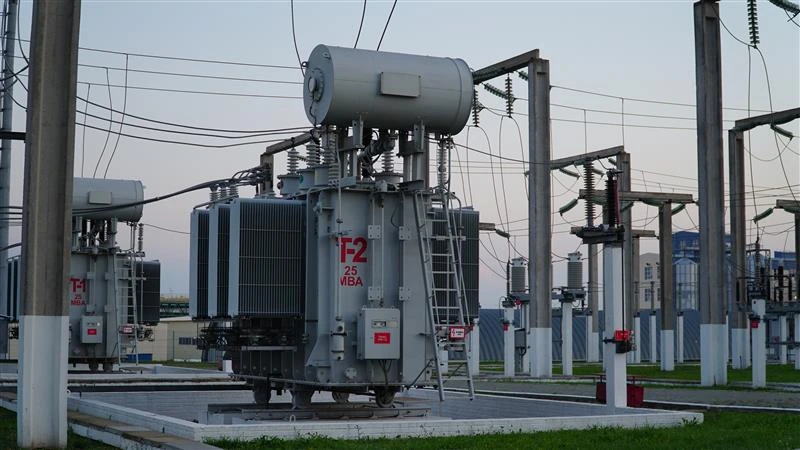IntroductionIn the realm of electrical engineering, the maintenance of transformers is critical for system reliability and continuity. Transformer Oil Analysis plays a significant role in diagnosing the health of transformers and pre-empting potential failures, ensuring operational efficiency and longevity. This article explores the intricacies of transformer oil testing methods, their imperative benefits, and how they contribute to optimized asset management.
The Science Behind Transformer Oil Analysis
The Role of Transformer Oil
Transformer oil, often referred to as insulating oil, is paramount in the proper functioning of a transformer. Serving as both a coolant and insulating agent, it effectively dissipates the heat generated within the transformer coils, ensuring they operate at an optimal temperature. Apart from its cooling properties, transformer oil also acts as a barrier that prevents contact between oxygen and the cellulose insulation of the windings, thus delaying the aging process and reducing the risk of oxidation.What Does Oil Analysis Entail?
Transformer Oil Analysis is a systematic process that examines the properties, contaminants, and impurities present in the transformer oil. The analysis includes a range of tests such as dielectric strength, acidity, moisture content, and dissolved gas analysis, among others. These tests are essential to gauge the oil’s current condition, its efficacy as an insulating medium, and to predict potential transformer-related issues that might arise in the future.Common Contaminants and Their Impact
Contaminants in transformer oil can jeopardize its performance and, by extension, the transformer’s efficiency. Common contaminants include moisture, dissolved gases, and particulate matter. Moisture, for instance, can decrease the oil’s dielectric strength, making the transformer vulnerable to electrical faults. Dissolved gases can indicate issues like overheating or arcing within the transformer. By understanding and identifying these contaminants through oil analysis, professionals can take preventive measures to enhance the longevity and performance of transformers.Interpreting Oil Analysis Results
The outcomes of transformer oil analysis are not merely a set of data points but a roadmap to the transformer’s health and operational status. Decoding these results requires expertise. Elevated moisture levels, for example, might indicate potential leakages or breaches in the transformer seal. A spike in certain gases might suggest overheating issues. Properly interpreting these results is crucial, as it guides subsequent actions – whether it’s a simple oil replacement, a more thorough cleaning, or a deeper investigation into potential transformer faults.In essence, Transformer Oil Analysis is an indispensable tool in the arsenal of electrical professionals. It not only safeguards the transformer’s performance but also extends its operational life, ensuring uninterrupted and efficient power distribution.Advantages of Regular Transformer Oil Analysis
Preventive Maintenance
One of the primary objectives of transformer oil analysis is to act as a preventive maintenance tool. By regularly analysing the transformer oil, potential issues can be detected at an early stage, allowing for timely interventions. This proactive approach helps in “enhancing longevity & performance” of transformers, ensuring that they operate efficiently and without sudden disruptions.Cost Reduction
The old adage “A stitch in time saves nine” perfectly encapsulates the cost benefits of regular transformer oil analysis. Detecting and rectifying issues early on can avert expensive repairs or replacements down the line. Furthermore, by preventing unexpected transformer failures, companies can avoid the financial repercussions of unplanned downtimes, such as lost productivity and emergency repair costs.Safety Assurance
Transformers, given their vital role in power distribution, can pose significant safety risks if not maintained adequately. Faulty transformers can lead to fires, explosions, or electrical failures. Regular oil analysis ensures that any potential hazards, like contaminants or degradation, are detected and addressed promptly, ensuring the safety of both the equipment and personnel.Regulatory Compliance
Many industries have set standards and regulations concerning the maintenance and operation of transformers. Regular transformer oil analysis is not just a best practice; in many cases, it’s a regulatory requirement. By adhering to these guidelines and ensuring that transformers are in top condition, companies can avoid penalties, legal complications, and maintain their reputation in the industry.The benefits of regular transformer oil analysis extend beyond the technical realm. While it’s undeniably crucial for maintaining transformer health, its implications for cost savings, safety, and regulatory compliance make it an indispensable practice for any company operating transformers.Advantages of Regular Transformer Oil Analysis
Preventive Maintenance
One of the primary objectives of transformer oil analysis is to act as a preventive maintenance tool. By regularly analysing the transformer oil, potential issues can be detected at an early stage, allowing for timely interventions. This proactive approach helps in “enhancing longevity & performance” of transformers, ensuring that they operate efficiently and without sudden disruptions.Cost Reduction
The old adage “A stitch in time saves nine” perfectly encapsulates the cost benefits of regular transformer oil analysis. Detecting and rectifying issues early on can avert expensive repairs or replacements down the line. Furthermore, by preventing unexpected transformer failures, companies can avoid the financial repercussions of unplanned downtimes, such as lost productivity and emergency repair costs.Safety Assurance
Transformers, given their vital role in power distribution, can pose significant safety risks if not maintained adequately. Faulty transformers can lead to fires, explosions, or electrical failures. Regular oil analysis ensures that any potential hazards, like contaminants or degradation, are detected and addressed promptly, ensuring the safety of both the equipment and personnel.Regulatory Compliance
Many industries have set standards and regulations concerning the maintenance and operation of transformers. Regular transformer oil analysis is not just a best practice; in many cases, it’s a regulatory requirement. By adhering to these guidelines and ensuring that transformers are in top condition, companies can avoid penalties, legal complications, and maintain their reputation in the industry.The benefits of regular transformer oil analysis extend beyond the technical realm. While it’s undeniably crucial for maintaining transformer health, its implications for cost savings, safety, and regulatory compliance make it an indispensable practice for any company operating transformers.Challenges in Transformer Oil Testing and Solutions
Sampling Errors
Proper sampling is the foundation of accurate transformer oil analysis. However, various factors can introduce errors during the sampling process. For instance, not using the right sampling containers or drawing samples from inappropriate locations can skew results.Solution: By following standardized sampling procedures, training personnel, and using the right equipment, these errors can be significantly minimized, ensuring that the “transformer oil analysis” genuinely reflects the oil’s condition.Environmental Variables
Temperature fluctuations and humidity can profoundly impact the results of transformer oil tests. A sample taken on a humid day might show higher moisture content than it actually has.Solution: By storing samples in temperature-controlled environments and calibrating instruments to account for environmental factors, the accuracy of tests can be maintained, thus “enhancing longevity & performance” of transformers.Technological Advancements
As the field of transformer maintenance evolves, so do the methods and technologies for oil testing. Being left behind technologically can result in inaccurate or incomplete analysis.Solution: Companies should invest in regular training sessions for their technicians and keep their equipment updated. This not only ensures accurate results but also aligns with the industry’s best practices.Data Accuracy
Consistency in testing results is crucial for making informed decisions. Variances in results can arise from equipment calibration errors or inconsistent testing methodologies.Solution: Regular calibration of testing equipment, alongside standardized testing procedures, can ensure the consistency and reliability of test results.Regular transformer oil analysis is an invaluable tool in predictive maintenance. However, the challenges that come with it can’t be overlooked. By being aware of these challenges and implementing the mentioned solutions, companies can make the most of their oil analysis endeavours, ensuring the optimal performance and extended lifespan of their transformers.Case Studies: Success Stories of Effective Oil Analysis
Crisis Aversion
Over time, transformers are prone to internal faults which, if not detected early, can lead to catastrophic failures. In a notable case study from a major utility company, transformer oil analysis detected a significant increase in certain gases. This was indicative of a potential fault. Prompt action based on the “transformer oil analysis” prevented a major outage, showcasing the preventive power of timely oil tests.Long-term Performance
A regional power distribution company consistently performed oil analysis over a decade. They observed a direct correlation between the health of transformer oil and the overall longevity of their transformers. By addressing minor issues flagged during routine tests, they were able to “enhance longevity & performance” of their assets, leading to a significant extension in their transformers’ operational life span.Cost-effectiveness
Another compelling case comes from an industrial facility that decided to adopt a rigorous oil testing regime. Over five years, by identifying and addressing minor issues early on, they saved substantial amounts in potential repair costs. This case accentuates the cost-saving potential of regular “transformer oil analysis”, as the expense of analysis was fractional compared to potential repair or replacement costs.Enhanced Safety Protocols
Safety is paramount in electrical installations. A case from an urban substation highlights this. Their routine oil analysis detected unusually high moisture content in the transformer oil. Moisture can lead to reduced insulation resistance and can be a significant safety hazard. Immediate action was taken to rectify the situation, ensuring the safety of both the equipment and the personnel.Through these case studies, the tangible benefits of regular transformer oil analysis become evident. It not only acts as a preventive tool but also as a mechanism to enhance the overall performance, safety, and cost-effectiveness of transformers, justifying its adoption as a standard practice across the electrical asset monitoring sector.The Future of Transformer Oil Analysis
Technological Innovations
As the world continues to innovate, so does the domain of “Transformer Oil Analysis.” Cutting-edge technologies are being introduced that promise more accurate and rapid results. For instance, the advent of sensors that can continuously monitor oil quality in real-time is a game-changer. These tools not only provide instantaneous data but also facilitate the early detection of potential issues, “enhancing longevity & performance” of transformers.Sustainability Trends
With growing environmental concerns, there’s a shift towards methods that are not just effective but also eco-friendly. The transformer industry is no different. Biodegradable transformer oils, made from renewable resources, are seeing an upsurge in adoption. Analyzing these oils requires a fresh approach and specialized techniques, marking a significant trend in transformer oil analysis practices.Integration with Predictive Analysis
The power of data cannot be overstated in today’s age. By integrating “Transformer Oil Analysis” with predictive analytics tools, it’s possible to forecast potential issues before they become critical. This proactive approach not only ensures optimal performance but also reduces maintenance costs. Predictive analysis, powered by machine learning and AI, can analyze vast datasets to provide actionable insights, pushing the boundaries of traditional oil analysis.Global Standardization
With globalization, there’s a growing need for universally accepted norms and standards. Efforts are underway to establish global benchmarks for transformer oil testing. Such standardization ensures consistency in testing methods, making it easier for industries worldwide to adhere to best practices and maintain high-quality standards.Peering into the future of transformer oil analysis, it’s evident that the field is set for transformative changes. These evolutions, grounded in technology and sustainability, promise to further the core objective of “enhancing longevity & performance” of transformers, making them more reliable and efficient.Conclusion
Transformer Oil Analysis stands as a cornerstone in the realm of electrical asset management, directly contributing to the longevity and robust performance of transformers. As technology advances and the industry evolves, so too will the methods and protocols for oil testing, promising even more reliable and efficient operational futures for transformers.



